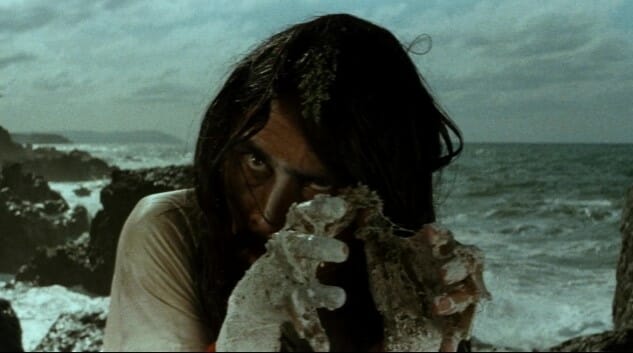This post is part of Paste’s Century of Terror project, a countdown of the 100 best horror films of the last 100 years, culminating on Halloween. You can see the full list in the master document, which will collect each year’s individual film entry as it is posted.
The Year
After 1968 provided us with twin classics, 1969’s horror offerings are a bit more down to Earth, although plenty weird. There’s no shortage of volume this year, but nothing that feels like a masterpiece of the genre. Instead, 1969 highlights the continued emergence of horror cinema in several international settings, including Japan, Mexico and Czechoslovakia.
The latter is a curious film called The Cremator, set in 1930s Prague, where the title character operates a crematorium and is obsessed with the spiritual aspect of burning the bodies of the deceased. He believes himself to be something of a cosmic ferryman, releasing the souls of those who die as a result of the encroaching wave of German fascism, giving the film a distinctly political aura. Striding the tipping point between dark drama and psychological horror, The Cremator was banned in Czechoslovakia for 20 years following its release, but is now hailed as one of the most important entries of Czech New Wave filmmaking.
This is likewise a year for trippy horror cinema out of Japan, including several films that experiment with depictions of sexual perversion, captivity and the degradation of the human form. Blind Beast, also known simply as Moju, is a rather disturbing depiction of power, misogyny and Stockholm syndrome in action, whereas Horrors of Malformed Men makes it difficult to not consider the psychological fallout of a country scarred by the atom bomb attacks at the end of the second world war.
Other notable films include the awesomely titled Hammer sequel Frankenstein Must Be Destroyed, which is among the better entries in the series except for the distressing decision to write a rape scene between Peter Cushing’s Frankenstein and the character played by Veronica Carlson—a seqence seemingly intended to ramp up the “sexuality” of the series, but instead it comes off as entirely out of place and gratuitous. Twilight Zone fans will also want to check out the Night Gallery TV film from 1969, as it launched Rod Serling’s horror-focused NBC series in style.
Finally, Ray Harryhausen devotees know that this is the year of The Valley of Gwangi, showcasing some of Harryhausen’s best stop-motion dinosaur work, although it had become notably more difficult to impress audiences with stop-motion effects by 1969. Sadly, it’s an art that is on its way out by this time.
1969 Honorable Mentions: The Cremator, Frankenstein Must Be Destroyed, Blind Beast, The House That Screamed, The Valley of Gwangi, The Book of Stone, Night Gallery (TV movie)
The Film: Horrors of Malformed Men
Director: Teruo Ishii
The choice of a top film for 1969 could have gone in a number of directions, but ultimately we were swayed by the pure, unrelenting bizarrity of Horrors of Malformed Men. A bad acid trip captured beautifully on celluloid, this work from cult Japanese director Teruo Ishii is like taking a pilgrimage to the island of Dr. Moreau, rendered as a home movie shot by Nicolas Winding Refn. It is, suffice to say, pretty damn weird.
Just trying to describe the plot of this film is a trip in and of itself. It opens with a young man who has been wrongfully imprisoned—or has he?—in a mental institution, with no memory of how he got there. Escaping, he sees the face of a dead man in a newspaper obituary that perfectly matches his own, and decides to slip into that upper class man’s life. To this point, the film plays like some kind of psychological mystery or noir, but the protagonist is then drawn toward a mysterious island, and that’s where the real fun begins. You want malformed men? You get malformed men, and then some.
Visually, this is a bizarre, colorful, orgiastic feast for the senses, combining the tawdry feel of a prime Bava giallo with a more serious director’s attempt at thematic profundity. The movie goes out of its way to provoke strong reactions by any means necessary, bandying around its deviant sexual imagery as if it’s nothing. The effect is jaw-dropping, but also increasingly profound as time goes by. Soaking it in, one begins to feel that the sight of these “malformed men” is a visual metaphor that stands in for the whole of post-war, post-bomb Japan—not only the humans who were literally maimed at Hiroshima or Nagasaki, but also the nation’s wounded psyche.
The man you would call the “villain” of Horrors of Malformed Men, Jogoro, is ultimately the synthesis of 20-plus years of post-war anxiety. He is one of the most stark raving mad of all cinematic antagonists, played with slinky perfection by actor Tatsumi Hijkata, moving with unnatural undulations that make him look like some kind of boneless aquatic creature that crawled up onto land. He casts a truly demented shadow upon the film’s superior second half, ruling the island like a sadistic philosopher king, as the audience is drawn ever deeper into the consciousness-expanding visuals.
Outside of the works of Alejandro Jodorowsky, you’ll be hard pressed to find more perfectly strange but hypnotically compelling material—a film you will remember in singular, head-scratching images for years to come.
Jim Vorel is a Paste staff writer and resident horror guru. You can follow him on Twitter for more film and TV writing.
